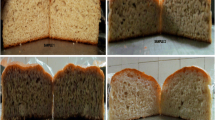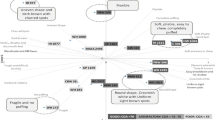Abstract
The acceptability of sorghum as human food has been a problem in Tanzania even in regions showing promising potential for its production and utilization. Reasons given for low acceptability of sorghum products as human foods include unpleasant colour, aroma, mouthfeel, taste, unpleasant aftertaste and stomachfeel. An acceptability test of selected sorghum products was, therefore, conducted in the Department of Food Science and Technology, Sokoine University of Agriculture, Morogoro, Tanzania. The objective of the test was to determine consumers' preference for the following wheat-sorghum composite flour products: bread and buns or ‘maandazi’. The products were prepared using sorghum flour composited with wheat flour in the following proportions: 100% brown sorghum flour (standard products); and 80:20%; 60:40%; 40:60% and 20:80% for wheat/sorghum (white and brown) composite flours. Results indicated that in the case of composite flour bread, preference for the product improved as the amount of sorghum flour decreased. In the case of buns or ‘maandazi’ the 100% sorghum flour products of both white and brown were equally preferred. Buns prepared from 100% sorghum flour of white and brown varieties showed promising potential in the improvement of the acceptability of sorghum products. Taking advantage of such products, especially in villages, could enhance sorghum utilization in rural communities.
Similar content being viewed by others
References
Keregero MM (1986) Some observations on sorghum research: Towards a strategy for effective dissemination of innovations on sorghum as human food in Tanzania. Paper presented at the Regional Workshop on New and Improved Foods from Sorghum: A Food Strategy for the Semi-arid Zones, held at Sokoine University of Agriculture, Morogoro, Tanzania.
Prasada Rao KE, Murty DS (1982) Sorghum for special uses. In: Proceedings of the International Symposium on Sorghum Grain Quality. Pantacheru (India): ICRISAT, pp. 129–136.
Badi SM, Bureng PL (1986) New advances in sorghum processing in the Sudan. Paper presented at the Regional Workshop on New and Improved Foods from Sorghum: A Food Strategy for the Semi-arid Zones, held at Sokoine University of Agriculture, Morogoro, Tanzania.
Mwasaru M, Nyambati MG (1986) Development of new sorghum foods in Kenya. Paper presented at the Regional Workshop on New and Improved Foods from Sorghum: A Food Strategy for the Semi-arid Zones, held at the Sokoine University of Agriculture, Morogoro, Tanzania.
Eggum BO, Munck L, Bach Knudsen KE, Axtell J, Maruku SK (1982) Miling and nutritional value of sorghum in Tanzania. In: Proceedings of the International Symposium on Sorghum Grain Quality. Pantacheru (India): ICRISAT.
Mosha, AC (1985) Nutritional evaluation of sorghum affected by germination with main reference to dietary bulk and protein quality. Unpublished PhD Thesis. Sokoine University of Agriculture, Morogoro, Tanzania.
Hulse HJ, Laing EM, Pearson OE (1980) Sorghum and the millets: Their composition and nutritive value. London: Academic Press.
Oinya S, Wamajje D (1986) Status of sorghum production and utilization in Uganda. Paper presented at the Regional Workshop on New and Improved Foods from Sorghum: A Food Strategy for the Semi-arid Zones.
Perten H (1977) Specific Characteristics of millet and sorghum milling. In: Dendy DAV, ed. Proceedings of the Symposium on sorghum and millets for human food. London: Tropical Products Institute, pp. 47–51.
Summer AK, Nielsen NA (1976) Sorghum and the millets: Their composition and nutritive value. London: Academic Press, 448 pp.
Maclean WC, De Roman GI, Gastanadvy A, Graham GG (1983) Effect of decortication and extrusion on the digestibility of sorghum by pre-school children. J Nutr 113: 2071–2077.
Author information
Authors and Affiliations
Rights and permissions
About this article
Cite this article
Keregero, M.M., Mtebe, K. Acceptability of wheat-sorghum composite flour products: An assessment. Plant Food Hum Nutr 46, 305–312 (1994). https://doi.org/10.1007/BF01088429
Received:
Accepted:
Issue Date:
DOI: https://doi.org/10.1007/BF01088429




